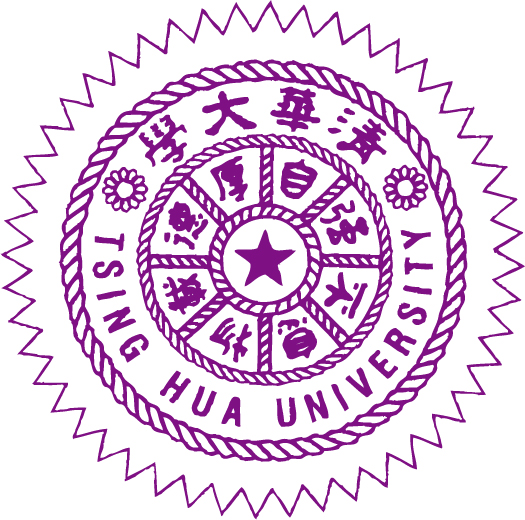Neuro-Engineering Lab
Research Field
Dr. Hsin Chen received his PhD in Electronics from the Edinburgh University, UK in 2004. Afterwards, he joins the EE Dept. of the NTHU and is now appointed as a professor. Hsin has established the Neuro-Engineering Lab focusing on developing (1) novel neuro-electronic interfaces for neural prostheses and neural engineering; (2) neuromorphic algorithms and realising the algorithms as stochastic very-large-scale-integration (VLSI) microsystems; (3) bio-mimetic systems for advanced research in neuroscience. The latest research findings have been translated into two clinical applications: (1) the batteryless, implantable microsystem for investigating the mechanisms of the deep-brain stimulation; (2) the electronic nose for smelling out pneumonia infection. All these research results have been recognised by three National Innovation Awards, three MXIC Golden Silicon Awards, and Many Chip Design Awards. Moreover, to promote related research and international collaborations, Hsin has organised the International Workshop on Bio-inspired Systems and Prothetic Devices (BioPro) during 2009~2018. He received the Outstanding Young Researcher Award from the Taiwan Integrated Circuit Design (TICD) society in 2013, and Outstanding Young Researcher Grant during 2016~2019. He was invited as a visiting scholar in the Bordeaux Uni. in France in 2008, in the University d'Evry in France in 2011, and in the Inst. of Neuroinformatics, University of Zurich in Switzerland in 2014. Finally, Hsin Chen is a member of the IEEE, the IEEE EMB, the IEEE CaS, and the TICD societies.
The Neuro-Engineering Lab (NEL) focuses on three closely-related research topics: (1) developing novel neuro-electronic interfaces (e.g. CMOS neuro-transistor arrays, carbon-nanotube microelectrodes) together with neural recording/stimulation microsystems for neural prostheses and neural engineering (yellow circle); (2) developing neuromorphic algorithms and realising the algorithms as stochastic very-large-scale- integration (VLSI) microsystems for recognising biomedical signals in implantable or portable devices (red circle), (3) developing bio-mimetic systems for advanced research in neuroscience (e.g. hybrid neural networks of biological and electronic neurons) and for innovative computation in deep-submicron technologies (e.g. stochastic spiking neural networks) (blue circle). From the three research areas sprout two branching activities (the orange ovals in Fig.1). First, the neuro-transistors are further applied to detecting biomolecules for in-situ disease diagnosis. In addition, microfluidics system is developed and integrated with VLSI microsystems to facilitate studying neuronal networks in-vitro. Secondly, innovative neuromorphic elements including noise-adaptable transistors and nonvolatile analogue memory are developed with standard CMOS technologies.
To fertilise these researches and to make these technologies really useful, the latest research findings have been applied to two clinical applications (green ovals in Fig.1): (1) the batteryless, implantable microsystem for investigating the mechanisms of the deep-brain stimulation (DBS) and thus for developing innovative treatments for the Parkinson’s disease; (2) the electronic nose with an embedded, adaptable neuromorphic system for smelling out pneumonia infection.
- Neuro-electronic interfaces and neural prostheses
- Stochastic neuromorphic VLSI systems
- Bio-mimetic devices and systems (spiking neural networks)
- Biosensors and microfluidics
- Non-volatile analogue memories and circuits
More information for each research topic is detailed in our website (http://nel003.ee.nthu.edu.tw/nel/research.php)
- 2020 17th National Innovation Award
- 2019 FUTEX (Future Technology Breakthrough) Award “Wireless Biomedical Theranostic Microchip for Neural Disorders” by Ministry of Science and Tech., TAIWAN.
- 2019 16th National Innovation Award renewal and the Excelsior Award “The Biochip and Smart NeuLive System for the Precision Medicine for Neural Disorders” Research Center for Biotechnology and Medicine Policy
- 2019 Taipei Computex design & innovation Specialty award “Autopilot, Smartphone-like Brain Explorer”
- 2016~2019 Outstanding Young Researcher Grant “The development of spiking neuromorphic system-on-a-chip that exploits transistor noise to achieve probabilistic learning and computation”
- 2017 Superior Award, the 17th MXIC Golden Silicon Award, “A Micro Neuromodulator with Far-Field Wireless Data and Power Transmission for Closed-loop Treatment on Neurodegenerative diseases”
- 2016 13thNational Innovation Award, “Multi-site, closed-loop brain pacemaker and theranostic device for treating the Parkinson’s disease”, Research Center for Biotechnology and Medicine Policy
- 2016 Extraordinary Project Award*, National Program of Intelligent Electronics, Ministry of Science and Technology (MOST)
- 2015 Promising Youngster Award, Taiwan Biomedical and Agricultural Industry Competition, Epoch “contact-lens-shaped retinal prosthesis”
- 2015 Superior Award*, the 15th MXIC Golden Silicon Award, “eNose for pneumonia diagnosis”
- 2015 Best Biomedical Hands-on Project, BME Consortium, the Ministry of Education (MoE), “Multi-channel, closed-loop neuro-electronic interface design”
- 2014 11thNational Innovation Award*“Portable eNose system for early-detection and monitoring of the COPD”
- 2014 Superior Award, the 14th MXIC Golden Silicon Award“Implantable microsystem for long-term studying the DBS mechanisms”
- 2014 Outstanding Project Award*, National Program of Intelligent Electronics, MOST
- 2014 Extraordinary Chip Design Award*, National Chip Implementation Center“A 0.5V 1.27mW nose-on-a-chip for rapid diagnosis of ventilator-associated pneumonia”
- 2014 Superior Chip Design Award*, National Chip Implementation Center“Toward a fully-integrated electronic nose SoC for portable biomedical applications”
- 2013 Outstanding Young Scholar Award, Taiwan Integrated Circuit Design Association
- 2013 Superior Biomedical Hands-on Project, BME Consortium, the Ministry of Education (MoE)“A microsystem able to record neural activities of rats wirelessly”
- 2013 Bronze Award*, the 13th MXIC Golden Silicon Award
- “A fully-integrated eNose system-on-a-chip for portable devices”
- 2012 9thNational Innovation Award*, “eNose for pneumonia diagnosis”
- 2012 Extraordinary Chip Design Award, National Chip Implementation Center, “An integration of multi-channel intracellular and extracellular neural signal recording system”
- 2012 Superior Chip Design Award, National Chip Implementation Center, “The low power diffusion network on-a-chip for recognising biomedical signals in real time”
- 2012 Best Paper Award, 4B Biomedical Engineering Annual Meeting“The log-domain Diffusion Network with noise controlling stochastic dynamics”
- 2012 Best Paper Award, 4B Biomedical Engineering Annual Meeting“An implantable brain-machine-interface microsystem with wireless power and data transmission”
- 2012 Best Paper Award, 4B Biomedical Engineering Annual Meeting “A reconfigurable neuronal network in VLSI for studying the CPR circuit of the crayfish”
- 2000.10~2004.07: Ph.D in Electronics, School of Engineering & Electronics, University of Edinburgh, UK.
- 1996.9~1998.6: MSc., Dept. of Electrical Engineering, National Tsing Hua University, Taiwan.
- 1992.9~1996.6: BSc., Dept. of Electrical Engineering, National Tsing Hua University, Taiwan
